Why Almost Any Dog Can Do Agility Training
What’s the first thing that comes to mind when you picture a dog doing agility training? A tall border collie gracefully gliding through an obstacle c
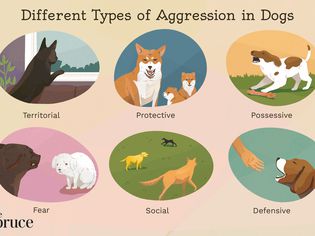
If your dog regularly growls, snaps, or bites, you might have a behavioral problem of aggression on your hands. Aggression is one of the top reasons dog owners seek the help of a professional dog trainer or animal behaviorist. And it's not just larger dogs and so-called "dangerous breeds" that are prone to aggression; any breed is capable of becoming aggressive under the right circumstances.
Although aggression can't be cured overnight, there are steps you can take to curb aggressive behavior and help your dog remain calm.
Aggressive behavior in a dog refers to any behavior connected with an attack or an impending attack. This includes becoming still and rigid, growling, snarling, baring teeth, lunging, and nipping or biting.
Your first step toward stopping this behavior is to figure out what is causing your dog's aggression. Some dogs growl as someone approaches them while they're eating or chewing a bone, for instance. Others react aggressively toward children or strangers.
The aggression doesn't have to be directed toward a person either. Some dogs become aggressive around other animals, only specific animals (cats but not other dogs), or toward inanimate objects, such as wheels on vehicles or yard equipment.
The key thing to keep in mind is that you can't come up with a plan to modify your dog's behavior until you know the reason behind it. The most common types of dog aggression include:
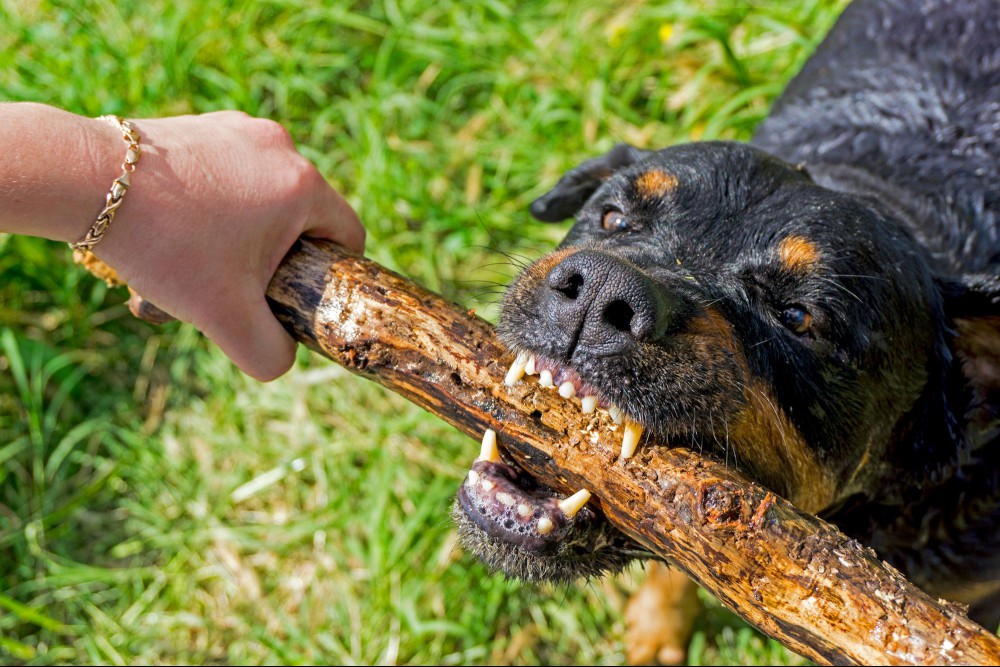
Elvira Kolomiytseva / Getty Images
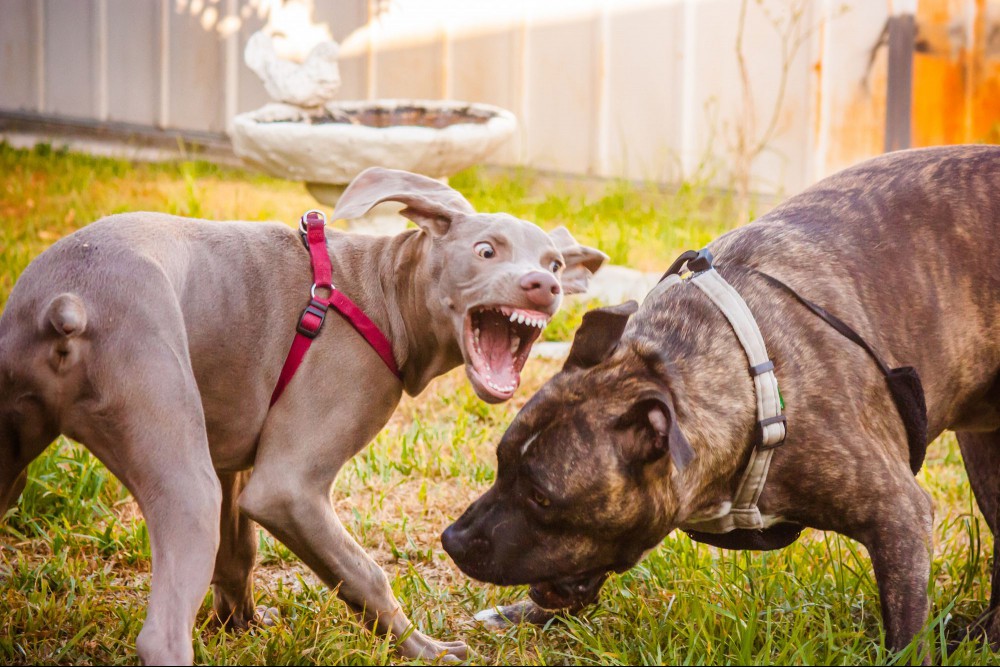
Tim Harrison / Getty Images
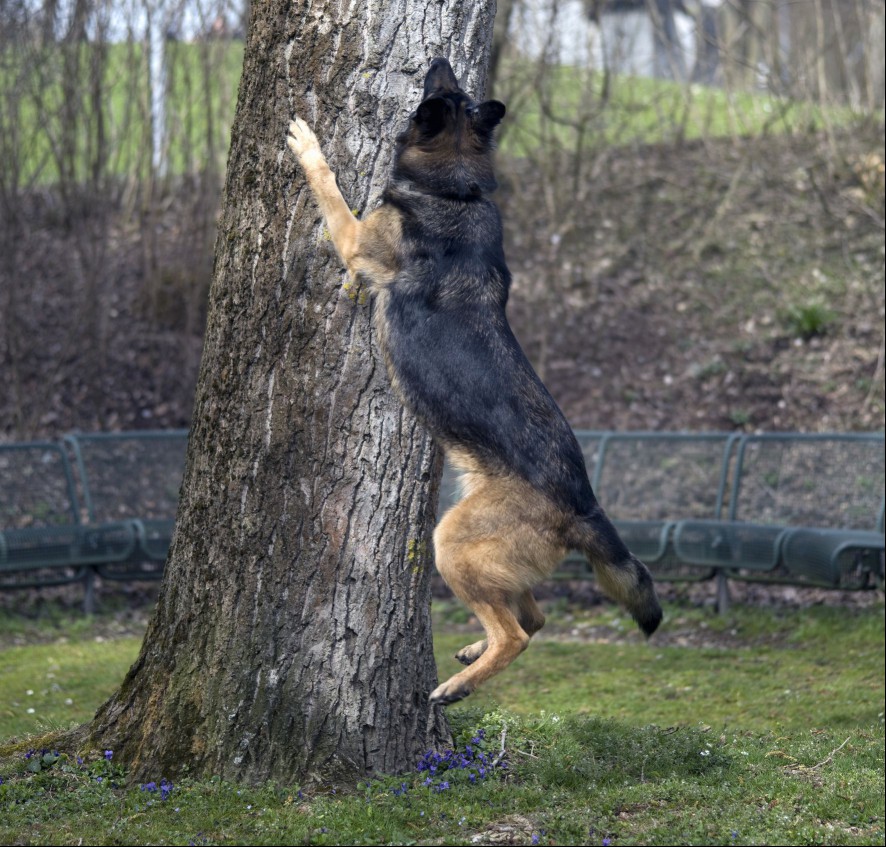
Any dog can pick up aggressive behavior, and it's important to track a pattern of warning signs, like:
Not all dogs who exhibit this behavior are generally aggressive—many of these warning signs are also an indication of anxiety or fear.
Make a note of when your dog becomes aggressive and the circumstances surrounding the behavior. This will play an important part in determining your next step. It is essential to deal with the underlying cause of the aggression. The behavior is just a symptom of an underlying problem. There are a number of ways you can manage the hostility and help your dog remain calm. It will take time, consistency, and possibly the help of a professional.
Dogs that aren't normally aggressive but suddenly develop aggressive behaviors might have an underlying medical problem. Health problems that may cause aggression include hypothyroidism, painful injuries, and neurological problems such as encephalitis, epilepsy, and brain tumors.
Talk to your veterinarian to determine whether this is the case with your dog. Treatment or medication may make big improvements in your dog's behavior.
If your vet has ruled out a medical problem, it's time to call in a professional dog trainer or animal behaviorist. Because aggression is such a serious problem, you shouldn't attempt to fix it on your own. A professional can help you figure out what's causing your dog's aggression and create a plan to manage it.
To find a professional dog trainer or behaviorist, ask your veterinarian for a referral or contact the Association of Professional Dog Trainers.
A behaviorist or trainer can help you figure out the best approach for managing your dog's aggression. In most cases, you'll use positive reinforcement to teach your dog new behaviors.
For example, if your dog is mildly aggressive toward strangers, start off by standing far away from someone your dog doesn't know. You should be far enough away so that your dog doesn't start to growl or snap. Then, reward with lots of treats and praise as you gradually decrease the distance between your dog and the stranger, continuing to use positive reinforcement.
Ideally, your dog will begin to learn that strangers equal treats and you'll see a reduction in its aggression. This same procedure can work for getting your dog used to a variety of other situations.
Punishing your dog for aggressive behavior usually backfires and can escalate the aggression. If you respond to a growling dog by hitting, yelling, or using some other aversive method, the dog may feel the need to defend itself by biting you.
Punishment may also lead to your dog biting someone else without warning. For example, a dog that growls at children is letting you know that he is uncomfortable around them. If you punish a dog for growling, he may not warn you the next time he gets uncomfortable, but may simply bite.
In some instances, training alone is not enough. Dogs that are aggressive may also need medication to help manage the problem. It's important to understand that a dog experiencing fear, stress, or anxiety is incapable of learning new things. Think of medication as a tool to help your dog overcome this fear. Many dogs will only need medication temporarily. Talk to your veterinarian about your options.
Finally, you need to consider whether your lifestyle allows you to stick with a plan. For instance, if you have a dog that acts aggressively toward children and you have kids, it's nearly impossible to avoid the situation that brings out the aggression. In this case, the best option for you and your dog may be finding it a new home with adults only.
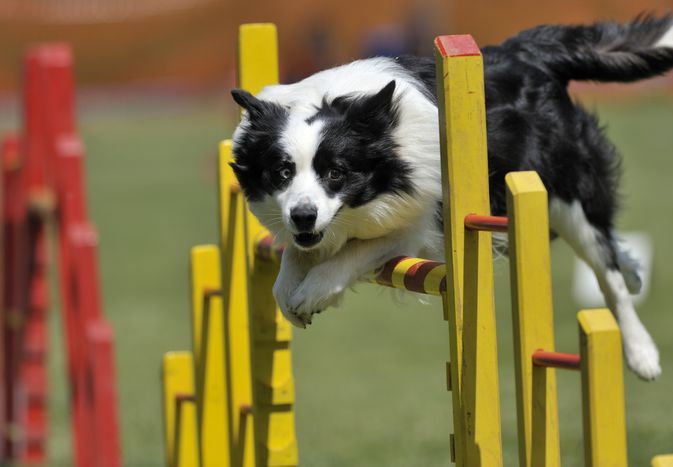
What’s the first thing that comes to mind when you picture a dog doing agility training? A tall border collie gracefully gliding through an obstacle c
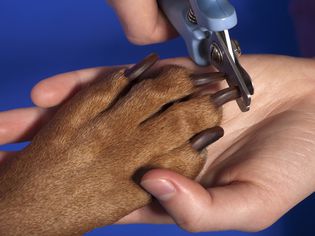
Does your dog get aggressive—maybe even try to bite—when getting his or her nails trimmed? Many people enjoy getting their nails done at a salon, but

Is your dog afraid of the stairs? Some dogs are afraid of going up and down stairs. This is a fairly common fear or phobia, especially in young dogs w

How does your dog feel about riding in your car? If it has no fear and loves a road trip, chances are it will jump right in. On the other hand, if it&

Dogs can eat cantaloupe in moderation. Like other melons, cantaloupe has a high water content and is bursting with nutrients for humans, but these ben
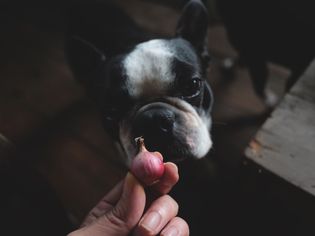
Onions, shallots, and chives are staples in savory dishes all over the nation. Whether your prefer your onions roasted, raw, or caramelized, they can
We are an information hub dedicated to delivering clear, trustworthy, and engaging content across a wide spectrum of topics — from innovation and trends to daily life, wellness, and global developments.
Our team is passionate about creating content that helps people stay curious, make informed decisions, and understand the world with greater clarity and context.
With a focus on quality, relevance, and accessibility, we aim to offer a meaningful experience for everyone seeking knowledge, ideas, and thoughtful perspectives.